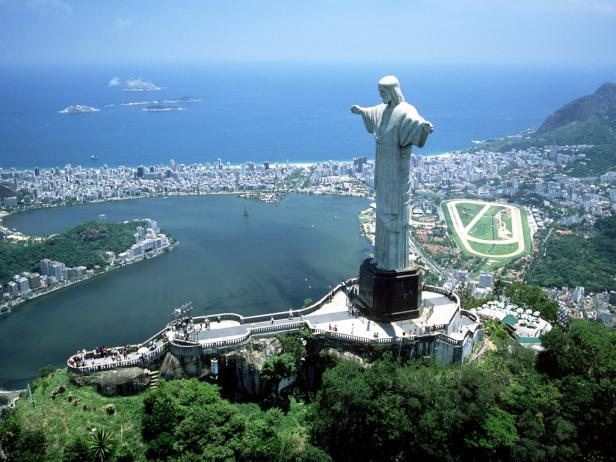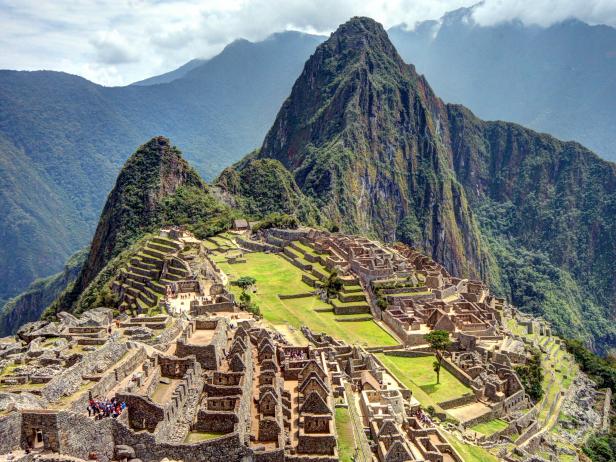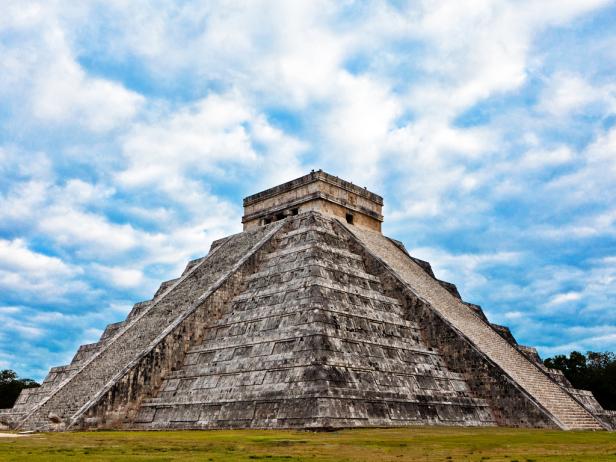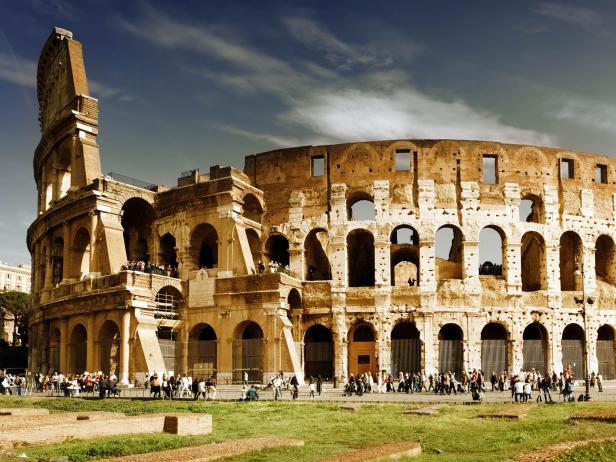Taj Mahal

The Taj Mahal.
The Taj Mahal is known the world over for its beautiful architecture, history and the tale of love that led to its creation. Located in the Indian city of Agra, the Taj Mahal was commissioned in 1632 by the Mughal emperor Shah Jahan as a testament of his love for his departed wife Mumtaz Mahal. Apart from housing her tomb, it also contains the tomb of Shah Jahan himself. The mausoleum, built with an ivory-white marble and precious stones, was designated as a UNESCO World Heritage Site in 1983. To this day it attracts 7 to 8 million visitors a year.
Great Wall of China (China)
Built between the 5th century B.C. and the 16th century, the Great Wall of China is a stone-and-earth fortification created to protect the borders of the Chinese Empire from invading Mongols. The Great Wall is actually a succession of multiple walls spanning approximately 4,000 miles, making it the world's longest manmade structure.
Christ the Redeemer Statue (Rio de Janeiro)
The Art Deco-style Christ the Redeemer statue has been looming over the Brazilians from upon Corcovado mountain in an awe-inspiring state of eternal blessing since 1931. The 130-foot reinforced concrete-and-soapstone statue was designed by Heitor da Silva Costa and cost approximately $250,000 to build - much of the money was raised through donations. The statue has become an easily recognized icon for Rio and Brazil.
Machu Picchu (Peru)
Machu Picchu, an Incan city of sparkling granite precariously perched between 2 towering Andean peaks, is thought by scholars to have been a sacred archaeological center for the nearby Incan capital of Cusco. Built at the peak of the Incan Empire in the mid-1400s, this mountain citadel was later abandoned by the Incas. The site remained unknown except to locals until 1911, when it was rediscovered by archaeologist Hiram Bingham. The site can only be reached by foot, train or helicopter; most visitors visit by train from nearby Cusco.
Chichen Itza (Yucatan Peninsula, Mexico)
The genius and adaptability of Mayan culture can be seen in the splendid ruins of Chichen Itza. This powerful city, a trading center for cloth, slaves, honey and salt, flourished from approximately 800 to 1200, and acted as the political and economic hub of the Mayan civilization. The most familiar ruin at the site is El Caracol, a sophisticated astronomical observatory.
The Roman Colosseum (Rome)
Rome's, if not Italy's, most enduring icon is undoubtedly its Colosseum. Built between A.D. 70 and 80 A.D., it was in use for some 500 years. The elliptical structure sat nearly 50,000 spectators, who gathered to watch the gladiatorial events as well as other public spectacles, including battle reenactments, animal hunts and executions. Earthquakes and stone-robbers have left the Colosseum in a state of ruin, but portions of the structure remain open to tourists, and its design still influences the construction of modern-day amphitheaters, some 2,000 years later.











0 Comments